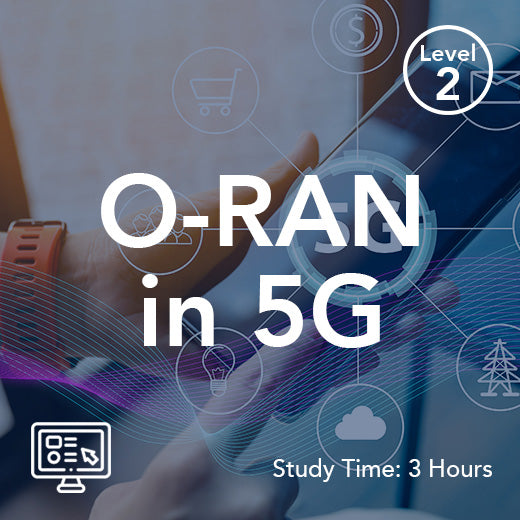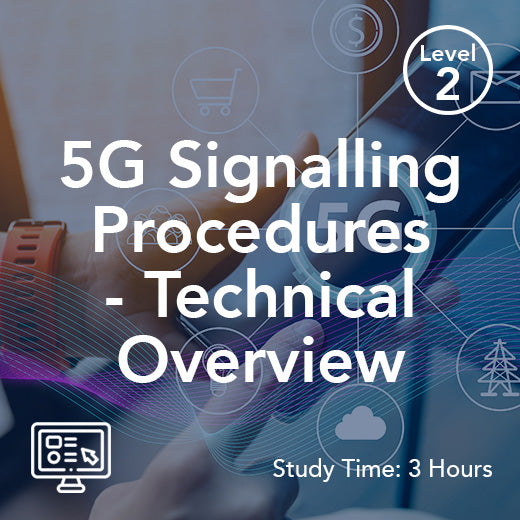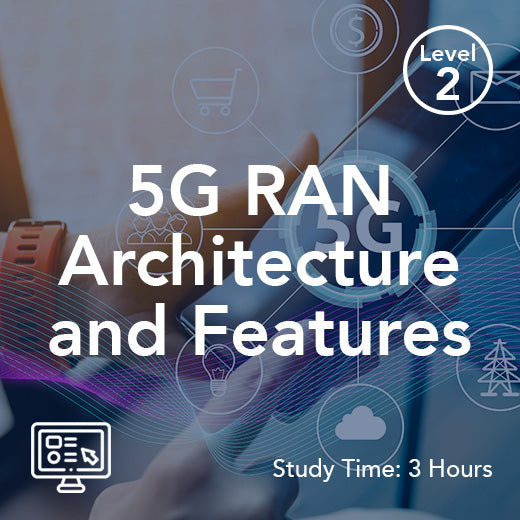Understanding Open RAN: A Simple Guide for Everyone
- , by Paul Waite
- 13 min reading time
In the world of telecommunications, Open Radio Access Network, commonly known as Open RAN, is gaining attention for its potential to revolutionise mobile networks. Open RAN is part of the ongoing shift in mobile network architecture, emphasizing openness, flexibility, and the adoption of interoperable standards across radio access network components. Unlike traditional RAN models, Open RAN offers a more flexible and cost-effective approach by allowing different vendors to provide various components of the network. This open architecture enables operators to mix and match hardware and software from different suppliers, promoting innovation and reducing dependency on a single service provider alone. As we delve into this guide, we’ll break down the fundamentals of Open RAN, explore its benefits and challenges, and understand why it is becoming a significant trend in the telecom industry. In contrast to current solutions that often rely on vendor-specific equipment and limited multi-vendor integration, Open RAN addresses interoperability challenges and supports the evolution of network infrastructure.
What is Open Radio Access Network (Open RAN)?
Basics of Open RAN
Open RAN stands for Open Radio Access Network, a concept that shifts away from traditional proprietary telecom equipment. At its core, Open RAN is about disaggregation. It separates the hardware and software components in the radio access network, allowing greater flexibility and choice in building and managing mobile networks. This separation means telecom operators are no longer confined to using a single vendor’s complete set of radio network and solutions. Instead, they can choose components from different suppliers that best suit their needs. The idea is to foster a competitive market environment that encourages innovation and reduces costs. By doing so, operators can implement network upgrades more quickly and efficiently. Open RAN enables open networks that foster collaboration and innovation by supporting an open ecosystem where industry partners can jointly develop and deploy best-of-breed infrastructure. Open RAN is underpinned by standardised interfaces, which ensure interoperability between different vendors’ equipment, creating an ecosystem where diversity and collaboration thrive. Multi vendor interoperability, facilitated by the RAN Intelligent Controller (RIC), is crucial in Open RAN as it allows seamless integration and coordination among equipment from various vendors, driving automation and optimization within the radio access network. This approach is a step towards more adaptable, scalable, and efficient mobile networks. Open RAN also supports the deployment of a multi vendor ran, enabling operators to avoid vendor lock-in and benefit from a flexible, programmable, and cost-effective radio access network architecture.
Key Components Explained: RAN Intelligent Controller
Open RAN comprises several key components and functions that work together to deliver an open and flexible network architecture. At the core is the base station, which serves as the physical or virtual equipment connecting mobile devices to the network. Base stations include components such as the Radio Unit (RU), Distributed Unit (DU), and Centralized Unit (CU). The Radio Unit handles the radio frequency signals and is responsible for transmitting and receiving data to and from mobile devices. It connects with the Distributed Unit, which processes lower-layer protocols and is crucial in managing data flow. The Centralized Unit further processes data and manages higher-layer protocols. These are key elements of the base station in an open RAN environment.
These units are connected via standardized interfaces, ensuring interoperability. The importance of open interfaces inside the base station cannot be overstated, as they enable seamless integration and multi-vendor deployments. Additionally, there’s the RAN Intelligent Controller (RIC), which provides a platform for real-time analytics and optimisation of the network’s performance. This controller plays a pivotal role in enhancing network efficiency and adaptability.
The hardware and software components described here represent the evolution of traditional ran equipment, moving from single-vendor, closed systems to open, interoperable solutions. In modern open RAN deployments, the concept of virtualized ran is increasingly important, allowing baseband functions to be moved to the cloud for greater agility and scalability.
The o ran architecture is defined by o ran specifications, and o ran refers to the set of standards developed by the O-RAN Alliance to promote openness, interoperability, and innovation in radio access networks.
How Open RAN Fits into Mobile Networks
Open RAN is becoming an essential part of today’s mobile networks, offering mobile network operators the ability to build and manage radio access networks with unprecedented flexibility. By adopting the open radio access network approach, service providers are no longer restricted to using equipment from a single supplier. Instead, they can select the best solutions from different vendors, which helps to reduce vendor lock-in and encourages a more diverse ecosystem of suppliers. This shift is made possible by the O-RAN Alliance, an industry body that develops and maintains open interface specifications for Open RAN components. These standards ensure that equipment from multiple vendors can work together seamlessly, making it easier for network operators to innovate and adapt to changing technology needs. As a result, Open RAN is helping to drive the evolution of mobile networks, supporting a more open, competitive, and collaborative telecoms industry.
The Role of Open RAN in Modern Mobile Networks
In the landscape of modern mobile networks, Open RAN is a game-changer for mobile network operators seeking to deploy radio access networks that are both adaptable and cost effective. By enabling the disaggregation of RAN components, Open RAN allows operators to integrate equipment from different vendors, fostering a competitive environment that drives down costs and accelerates innovation. A standout feature of Open RAN is the RAN Intelligent Controller (RIC), which leverages artificial intelligence and machine learning to optimize network performance in real time. This intelligent controller can automate network functions, improve resource allocation, and enhance the overall user experience. Additionally, Open RAN’s flexible network architecture supports more efficient energy consumption, helping operators build greener, more sustainable mobile networks. For mobile operators, these advancements mean they can deliver better service quality, respond quickly to new demands, and maintain a future-ready network infrastructure.
Exploring Open RAN Architecture
Open RAN architecture is purpose-built to offer flexibility, scalability, and cost-effectiveness for mobile network operators deploying radio access networks. Unlike traditional, closed systems, Open RAN is based on community-developed standards that allow different components—such as radio units, distributed units, and centralized units—to be sourced from multiple vendors. This multi-vendor approach not only reduces costs but also encourages a diverse ecosystem of solution providers, driving innovation across the telecoms industry. The architecture’s modular design makes it easier for network operators to upgrade or expand their networks as technology evolves, without being tied to a single supplier. By supporting open interfaces and interoperability, Open RAN architecture empowers operators to create tailored, future-proof mobile networks that can adapt to new services and deployment scenarios with ease.
Benefits of Open RAN
Cost Efficiency and Savings
Open RAN offers significant cost efficiency and savings for telecom operators. By decoupling hardware and software, operators can avoid being locked into expensive, single-vendor contracts. Instead, they have the freedom to choose from a variety of vendors, fostering competition and driving down prices. This competitive environment can result in lower capital expenditure (CapEx) as operators select cost-effective solutions tailored to their specific needs. Additionally, the use of standardised hardware further reduces costs, as operators can deploy more generic and widely available equipment. Open RAN also strengthens the supply chain by enabling operators to source network components from a wider range of suppliers, increasing supply chain resilience and flexibility. Another layer of savings comes from reduced operational costs (OpEx). Open RAN allows for automation and streamlined operations across entire network, minimising the need for extensive manual intervention. This efficient management translates into ongoing savings over the network’s lifespan. In essence, Open RAN enables operators to build and maintain networks more economically, allowing them to allocate resources to other strategic areas of growth and innovation. Furthermore, Open RAN encourages the entry of new suppliers, fostering innovation and competition within the telecom industry.
Flexibility, Innovation, and Multi Vendor Interoperability
Open RAN is celebrated for its flexibility, which paves the way for innovation in the telecom sector. By embracing an open architecture, operators can mix and match components from different vendors, leading to bespoke network solutions that cater to specific requirements. This flexibility means networks can be more easily adapted or scaled to meet changing demands. Open RAN also enables seamless connectivity for other devices, not just smartphones, within the network infrastructure, thanks to its open standards that facilitate compatibility and interoperability. Operators are no longer constrained by the limitations of a single vendor’s roadmap and can quickly incorporate cutting-edge technologies as they emerge. Moreover, the open nature of Open RAN encourages a collaborative ecosystem where multiple players contribute to the development of new solutions. This collaborative spirit accelerates the pace of innovation, allowing for the rapid deployment of new services and technologies. Consequently, consumers benefit from improved network performance and novel services. In summary, Open RAN not only enhances network adaptability but also fosters an environment where innovation thrives, benefiting both operators and end-users alike.
Challenges Facing Open RAN
Technical Hurdles
Despite its advantages, Open RAN faces several technical hurdles that need addressing. One of the primary challenges is ensuring interoperability between components from different vendors. While standardised interfaces aim to facilitate this, achieving seamless integration can be complex and require significant effort. Unlike traditional systems managed by one vendor, where integration and management are streamlined, Open RAN requires coordination among multiple suppliers, adding to the complexity. Another technical challenge lies in performance optimisation. Traditional RAN systems, developed by a single vendor, often have finely tuned performance. In contrast, Open RAN must achieve similar performance levels while integrating diverse components, which can be demanding. Additionally, network security in an open ecosystem is a concern, as increased vendor diversity may introduce vulnerabilities. Ensuring robust security measures across components from multiple sources is crucial. Furthermore, the deployment of Open RAN may require significant initial investment in training and infrastructure, which can be a barrier for some operators. Addressing these technical challenges is key to realising the full potential of Open RAN in the telecommunications landscape.
Security Concerns
Security is a prominent concern in the adoption of Open RAN. The open and multi-vendor nature of the architecture increases the risk of vulnerabilities, as it involves integrating components from various suppliers. Each component introduces its own set of security challenges, and ensuring consistent security standards across a diverse ecosystem can be intricate. This diversity necessitates rigorous testing and validation to prevent potential security breaches. Moreover, open interfaces, while promoting interoperability, can also be exploited if not adequately protected. Operators must implement robust security protocols and practices to safeguard network integrity and data privacy. Additionally, as Open RAN encourages the use of software-based solutions, it becomes crucial to frequently update and patch systems to counteract emerging threats. Ensuring a unified security framework that spans all components and adheres to industry best practices is essential. Addressing these security concerns is vital for the long-term viability and trust in Open RAN deployments.
Future of Open RAN
Industry Adoption Trends
The adoption of Open RAN is steadily gaining momentum within the telecommunications industry. Many operators are exploring and implementing Open RAN solutions as part of their network modernisation strategies. The trend is driven by the promise of increased flexibility, cost efficiency, and the ability to innovate more rapidly. Major telecom providers are conducting trials and initial deployments to evaluate Open RAN’s potential in real-world scenarios. Additionally, governments and industry bodies are supporting Open RAN initiatives, recognising their potential to boost competition and reduce dependency on a handful of traditional vendors. Collaborations and partnerships between operators, vendors, and technology firms are becoming more common, reflecting a growing consensus around the benefits of Open RAN. Industry partners play a crucial role as collaborators in Open RAN adoption, working together to enhance network performance, security, and scalability. However, widespread adoption requires overcoming technical and security challenges, necessitating continued investment in research and development. As the ecosystem matures and standards solidify, it is anticipated that Open RAN will play a pivotal role in shaping the future of mobile network architecture.
Potential Impact on Telecom
Open RAN has the potential to significantly transform the telecom industry. By breaking the monopoly of traditional vendors, it introduces a more competitive landscape mobile network operators, which can drive down costs and foster innovation. This competition is likely to lead to more frequent updates and improvements in network technology, benefiting end-users with better service quality and more innovative offerings. Additionally, Open RAN could democratise access to advanced network technology, enabling smaller operators to enter the market and provide services without the prohibitive costs associated with proprietary systems. This change may result in enhanced connectivity, particularly in underserved or rural areas. Furthermore, as Open RAN promotes a modular approach, it supports the swift integration of emerging technologies, such as 5G and beyond, potentially accelerating the rollout of next-generation networks. In summary, Open RAN's impact on telecom could be profound, leading to more dynamic, cost-effective, and innovative network solutions across the globe.
How to Get Involved
Learning Resources Available
For those interested in delving into Open RAN, a variety of learning resources are available to help newcomers and seasoned professionals alike. Online courses and webinars hosted by industry experts provide foundational knowledge and insights into the latest developments in Open RAN technology. Many telecommunications companies and academic institutions offer free and paid courses focusing on the architectural and technical aspects of Open RAN. Additionally, white papers and research publications from organisations such as the O-RAN Alliance offer in-depth analyses and technical specifications. For a more hands-on approach machine learning, joining telecom forums and communities can be invaluable. These platforms allow individuals to engage with peers, share experiences, and gain practical insights. Attending industry conferences and workshops is another excellent way to stay informed and connected with Open RAN advancements. Whether through formal education or community engagement, numerous avenues exist to enhance one's understanding and involvement in the Open RAN landscape.
Joining the Open RAN Community
Engaging with the Open RAN community is a rewarding way to deepen your involvement and stay updated on industry trends. Numerous organisations and forums, such as the O-RAN Alliance and Telecom Infra Project, offer platforms for collaboration and knowledge exchange. By becoming a member or participating in events, individuals can connect with other professionals, share insights, and contribute to the ongoing development of Open RAN technologies. Online forums and social media groups dedicated to Open RAN are also valuable resources for networking and learning from peers. Additionally, participating in hackathons or open-source projects can provide practical experience and exposure to real-world challenges and solutions. These activities not only enhance technical skills but also foster relationships with other innovators in the field. Whether through professional associations, online communities, or collaborative projects, joining the Open RAN community opens up opportunities for both personal and professional growth in the ever-evolving telecom landscape.

































